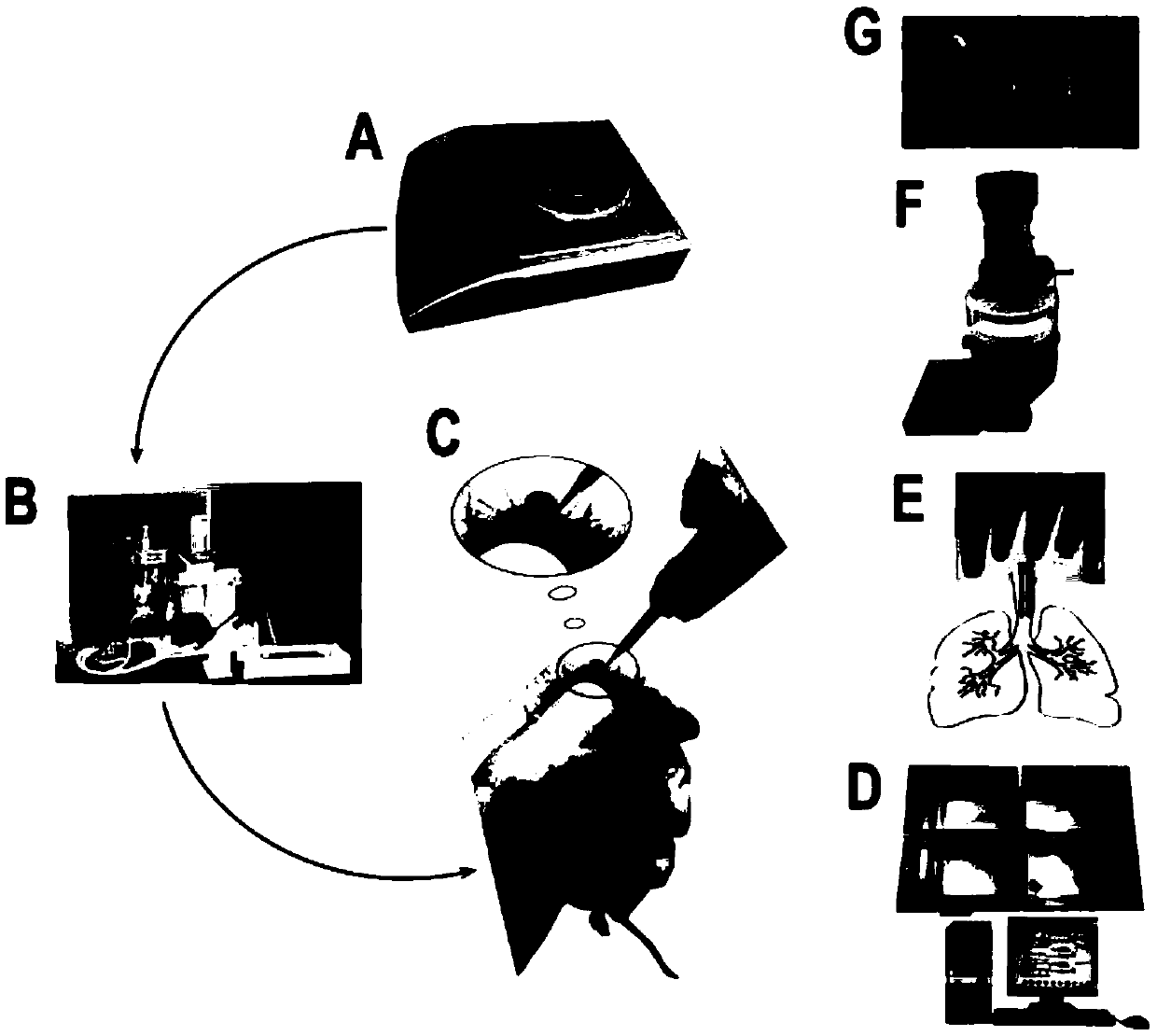Preparation method of silicosis mouse models
A mouse model and silicosis technology, applied in the experimental field, can solve the problems of instillation not in line with the breathing rhythm of mice, good repeatability of mouse silicosis model, increase of external factors of silicosis, etc., to achieve repeatability and High safety, simple and efficient technical methods, and the effect of avoiding physical and mental trauma
- Summary
- Abstract
- Description
- Claims
- Application Information
AI Technical Summary
Problems solved by technology
Method used
Image
Examples
Embodiment 1
[0021] Example 1. Experimental preparation before mouse modeling
[0022] 1. Adaptation of mice to the environment
[0023] Prepare a systematic system for feeding and experimentation, purchase mice, adapt to the environment for a week, completely randomly divide them into experimental groups and control groups, mark them well, age 7-8 weeks, weigh 18-23g, etc., prepare mice for quantitative anesthesia Machine, high-precision electronic scales, 200ul pipette, preparation of sterile SiO2 suspension, isoflurane, sterile saline, etc.
[0024] 2. Baoding the mouse after anesthesia
[0025] The mice were taken out from the normal temperature animal breeding room, and the basic body weight was recorded. The mice in the model group were anesthetized with isoflurane in an anesthesia machine. When the mice changed from shallow and fast breathing to deep and slow breathing for 3 seconds, they were taken out and placed in the palm of their hands, and nasal drops were performed. Before ...
Embodiment 2
[0026] Embodiment 2. Nasally inhaled SiO2 Preparation of mouse silicosis model
[0027] At the beginning of the nasal drop operation, mix the SiO2 suspension thoroughly and inhale 50-80 μl with a pipette. The tip of the pipette is aimed at the side of the nose of the mouse instead of the tip of the nose, and gently drip a drop. Instill the next drop until the end of the drop, pay attention to observe the breathing state of the mouse while dripping, massage and stroke the chest after the drop is complete, ensure that the vital signs are restored, put it in the cage for observation, and send it back to room temperature after all the experiments are over Breeding in an animal laboratory; put the thumb tip against the jaw of the mouse, and use a micropipette to drip the suspension of SiO2 micron-sized particles through the nose. Every time the mouse inhales a drop, the operator drops a drop until all the drops are finished. Massage externally for 2-3 minutes and put them in the ca...
Embodiment 3
[0028] Example 3. Evaluation of inhalation distribution by color development after adding Evans blue
[0029] Evans blue is an azo dye, which has been used as a chromogenic agent for simulating tracer SiO2 in mouse silicosis modeling (for specific methods, please refer to the literature: Intratracheal instillation and nebulization of bleomycin to induce small A comparative study of a murine model of pulmonary fibrosis). Here we apply Evans blue to the preparation and evaluation stage of a new mouse model of silicosis. After preparing a suitable concentration of dye, we drop different volumes of Evans blue solution into the mice, and after 45 minutes They were anesthetized and killed, and their lungs were fixed in 10% neutral formaldehyde. They were roughly placed and disassembled and placed in a well-lit place to conduct statistical analysis on the distribution of the dye solution and the coloring of each lung lobe.
PUM
 Login to View More
Login to View More Abstract
Description
Claims
Application Information
 Login to View More
Login to View More - R&D
- Intellectual Property
- Life Sciences
- Materials
- Tech Scout
- Unparalleled Data Quality
- Higher Quality Content
- 60% Fewer Hallucinations
Browse by: Latest US Patents, China's latest patents, Technical Efficacy Thesaurus, Application Domain, Technology Topic, Popular Technical Reports.
© 2025 PatSnap. All rights reserved.Legal|Privacy policy|Modern Slavery Act Transparency Statement|Sitemap|About US| Contact US: help@patsnap.com

